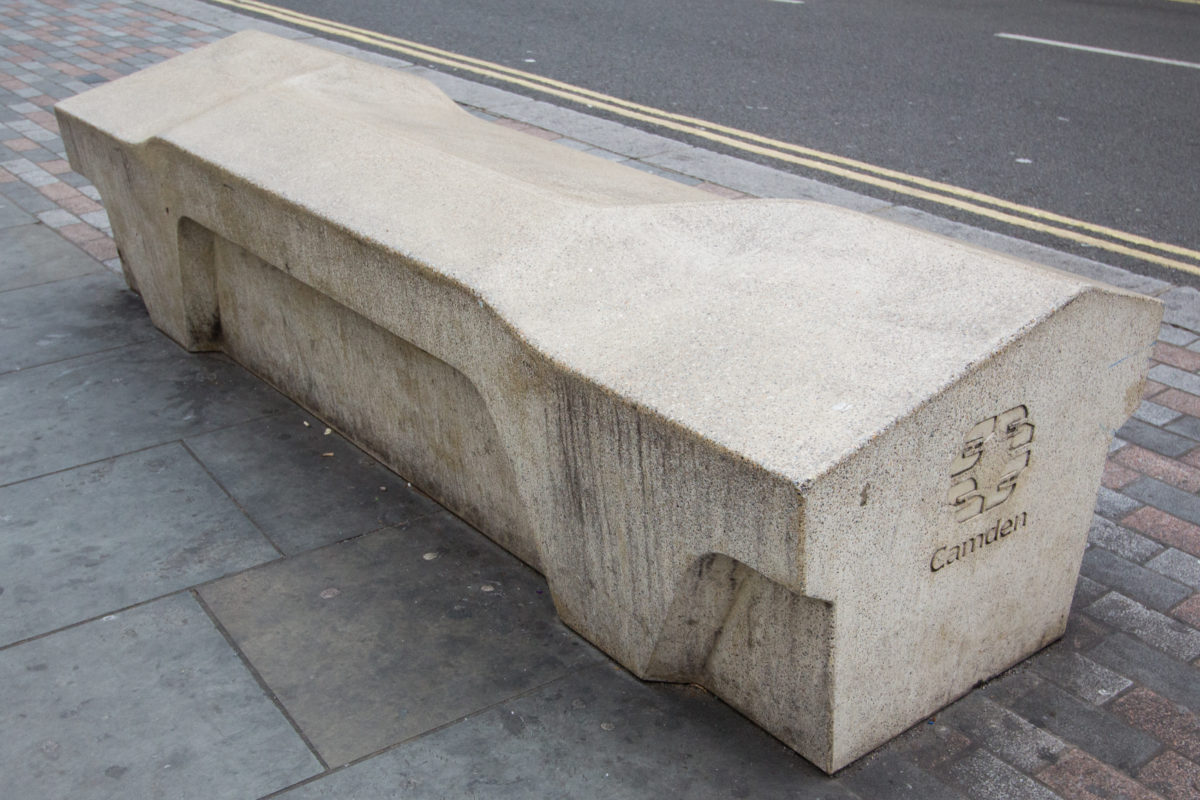In 2012, the Camden London Borough Council commissioned a bench so uncomfortable that nobody would want to sit and linger on it. On purpose.
Now known as the “Camden Bench,” the angular block of cement was designed to restrict undesirable behaviors like sleeping and it launched a whole new movement known as “hostile architecture.”
Cities could now respond to the presence of homelessness by designing public seating to make it even more uncomfortable than it already was, rather than accommodating it with traditional things like benches that might allow for someone to fall asleep on them.
The bench was also great at deterring littering with its sloped surfaces, as anything placed on it would simply fall to the ground; the irregular edges made it too difficult to skateboard on; and by removing the back of the bench, people couldn’t hide and pass drugs to each other or hide things in any nooks or crannies.
It came with a waterproof, anti-paint coating that made it almost impossible to tag with graffiti and was too heavy to move without a crane to lift it aloft from its built-in anchors. Cities even used them as roadblocks or bollards to prohibit car traffic.
The “bench” became known more like an “anti-object,” defined more as something that it is not than what it actually was.
Forms of “hostile architecture” like the Camden Bench are now a widely practiced urban design strategy that use the built environment to prohibit or restrict behavior like placing studs or spikes on flat surfaces to restrict, not only pigeons but humans from lingering or loitering.
Other tactics include sloping window sills that are near sidewalks so anyone trying to sit on them will slip off or motion-activated sprinklers to water trespassers rather than lawns. Portland, Oregon installed swaths of rocky boulders in areas that were attracting homeless camps in 2013 to deter any illegal overnight stays.
Though the term is modern, the practice is ubiquitous with urban planning from castle moats to “urine deflectors” in Germany to stop people from pissing on historic buildings when leaving the pubs.
The practice has evolved into different branches through the years to include CPTED or “Crime Prevention Through Environmental Design” which is a reaction to the “Broken Window” principle that neglected areas often invite crime – that maintaining property to assert visible ownership of space is one of the best ways to fight crime sustainably as it doesn’t let it take root.
Hostile architecture and CPTED are heavily influencing how cities around the world design and use public space, even Orlando, whether it’s fences or outright walls.


Saying that hostile architecture is ubiquitous in urban design practice may be the most ridiculous built environment statement I’ve heard in a long time. I think that the CNU practitioners among us, who are considered the “urban designers”, wouldn’t advocate for such a thing – and there was an entire plenary session from Jan Gehl of Copenhagen condemning the practice.
O.K., so no consideration is given to elderly (or others) who simply need a place to sit when out walking, trying to enjoy the city or an activity. Seems so wrong.